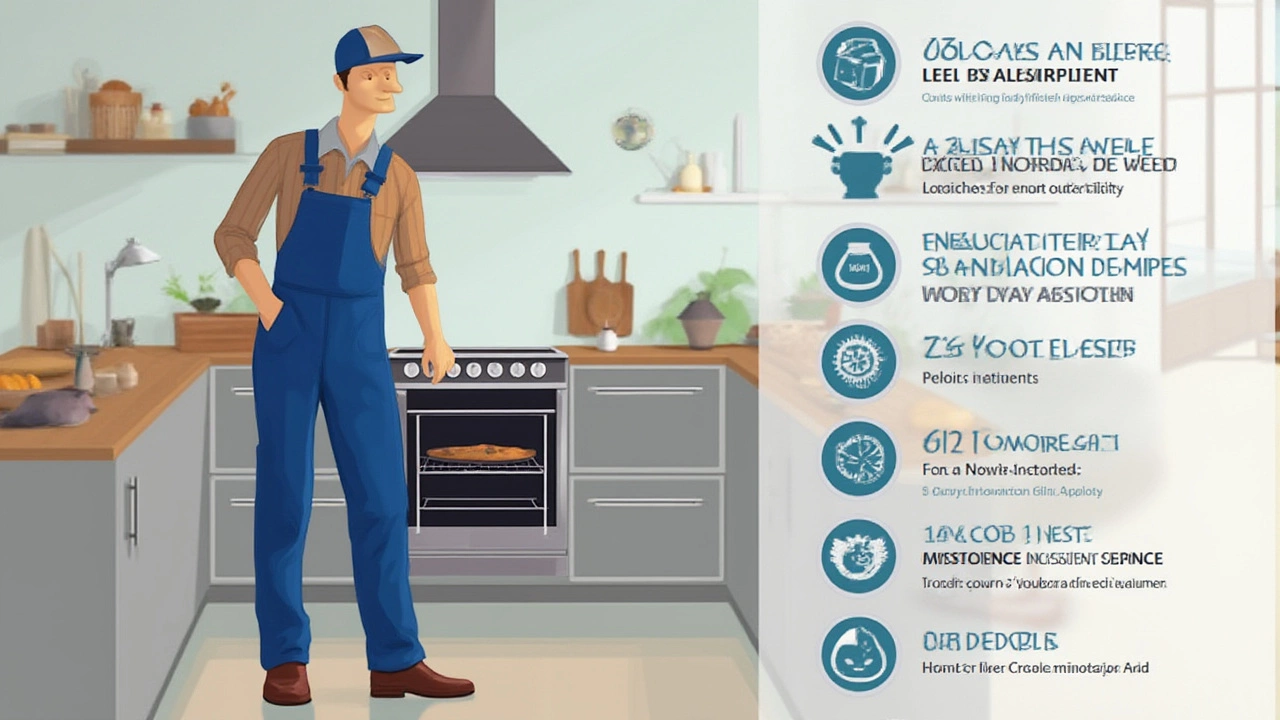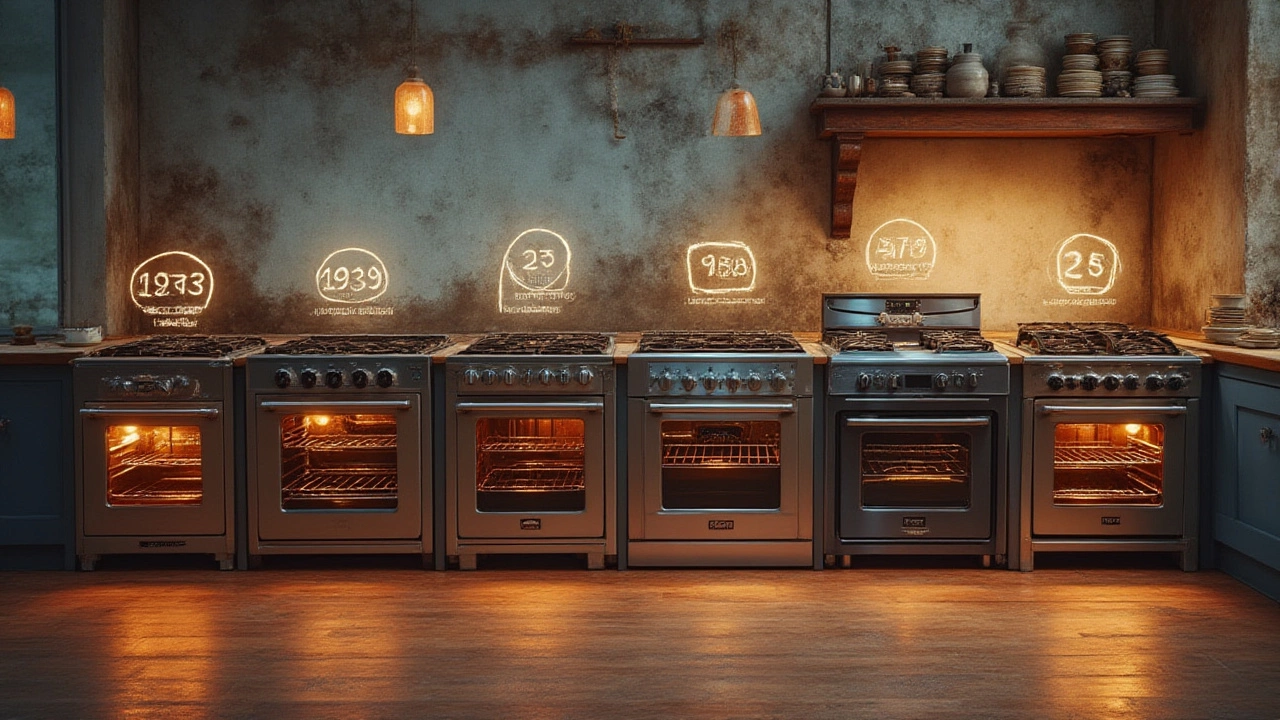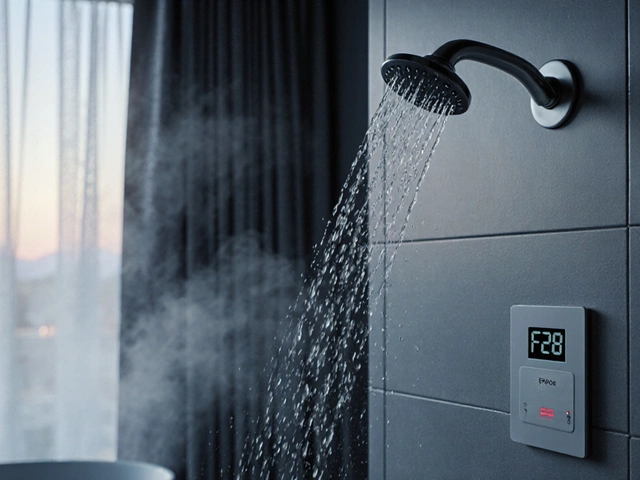Most people don’t think much about their electric oven until it throws a tantrum right as you’re prepping a roast for dinner guests. I’ve been there; Tristan’s birthday cake nearly ended up burnt on the outside and raw in the middle thanks to a sudden oven hiccup. But just how long should you expect your oven to keep churning out family dinners and late-night cookies before it calls it quits? The answer might surprise you. Ovens aren’t immortal, but the good news is with a bit of know-how, you can squeeze years—and I mean years—out of them.
What’s the Real Expected Lifespan of an Electric Oven?
If you ask a bunch of homeowners in Auckland or anywhere else, you’ll get all sorts of answers. Some claim their parents’ oven lasted since disco was in style; others are replacing theirs after just a handful of years. Let’s look at hard numbers for a change. The New Zealand Home Appliance Industry Association and similar groups across the globe often peg the electric oven lifespan at around 13 to 15 years. Obviously, there’s no magic countdown clock built into your oven. Think of that figure as a ballpark—some last less, plenty go longer, and a handful conk out much sooner, especially if the oven sees a lot of pizza reheats and the occasional kitchen science experiment with the kids.
Manufacturers themselves are a mostly optimistic bunch. They generally design ovens for at least 10 to 15 years of regular use. A study released in 2024 by the European Committee of Domestic Equipment Manufacturers observed that nearly 80% of electric ovens in the EU lasted at least 10 years before the first major issue. Here’s a quick look at real world data:
| Make/Brand | Average Lifespan (years) | Warranty Length (years) |
|---|---|---|
| Fisher & Paykel | 13-15 | 2 |
| Samsung | 11-14 | 1-2 |
| Bosch | 12-16 | 2 |
| Westinghouse | 12-14 | 1-2 |
| Whirlpool | 13-15 | 1-2 |
Now, if you want hard evidence closer to home, Consumer NZ’s 2023 home appliance survey showed that the average Kiwi replaced their main oven after around 12 years, with higher-end models scraping up to 17 years if looked after well. Are there outliers? Of course—Tristan’s grandma’s old Simpson built-in practically outlived her dog, but these tend to be exceptions, not the rule nowadays.
The thing is, ovens don’t just stop working one day. More often, things fade out. Maybe the temperature gets a bit dodgy, or the door seal wears thin. So, lifespan isn’t a hard stop but a slow shuffle to the finish line. And here in Auckland, where salty coastal air can sneak in through windows, your oven might lean toward the shorter end of the estimate unless you keep it in tip-top shape.

What Makes Some Ovens Last Longer Than Others?
Alright, so why do some people get 5 years out of their oven and others nearly 20? It’s not all luck. Let’s break it down by what really matters. First up is how often you use it. A big family baking every night will wear out an oven way faster than a single guy who mostly eats out. Another biggie is build quality. Budget models can sometimes be a false economy—thin metal, fewer insulation layers, and cheap heating elements wear out quickly. If you spent extra for a solid, reputable brand, you've likely bought yourself more years without even thinking about it.
Here’s a curveball: Power surges and dodgy wiring. New Zealand’s weather may be mild, but lightning storms or grid hiccups can fry circuitry, so those surge protectors are more than just a gimmick. Also, most people ignore maintenance. Simple jobs like wiping out spills (especially sticky sugary ones), checking door seals for gaps, and giving the fan a good clean can delay wear and tear a ton. Every burnt-on bit you leave inside is a chance for rust or for the heating element to degrade faster.
Ventilation plays its part too. I’ve seen folks block the oven’s vent with pans or foil—don’t. You want heat and humidity escaping as designed, otherwise parts inside can corrode or warp prematurely. And here’s something no one tells you: the oven door itself is often the first thing to go. Hinges and gasket materials lose their spring, causing heat to seep out and the oven to run inefficiently, which means the heating element works harder and wears out faster. If your cakes are suddenly lopsided, look for sagging doors or cracked inner glass.
Last but not least, don’t forget where the oven lives. In some older Auckland homes, insulation isn’t great and the kitchen gets damp in winter. Moisture + electronics = early death for many appliances. If your oven’s crammed into a tiny cavity with zero breathing room, expect a shorter ride. Meanwhile, modern homes with well-ventilated, dry kitchens and regular cleaning schedules tend to see ovens run the full course and then some.

Getting More Years Out of Your Oven: Real, Practical Tips
So, how can you make sure your oven sticks around long enough to see your kids’ birthday cakes for two decades? Here are some no-nonsense, proven moves you can make, starting today:
- Clean up spills as soon as they happen. Sugars and acids corrode metal fast if left to bake on and on.
- Check the door seal and hinges twice a year. If the door doesn’t close firm and even, replace the gasket. It’s cheap and makes a massive difference.
- Avoid using the self-cleaning mode too often. It cranks the temp so high it can actually wear out internal parts quicker. Use elbow grease instead.
- Don’t slam the oven door. Kids (yes, I’m looking at you, Tristan) love to give it an extra push, but it’ll bend the hinges and wear out the latch.
- Wipe the fan blade if you have a fan-forced model. Excess grease on the fan means uneven heating, which can cause the element to work harder.
- Use a surge protector for the power outlet. NZ’s grid isn’t immune to surges, and a fried circuit board usually means ‘upgrade time.’
- Leave room for air. Make sure there’s at least a couple of centimeters around your oven for air to circulate, especially the back and sides.
- Don’t line the base of the oven with foil unless the manufacturer says you can. It can mess with heat distribution and block vents.
One trick I learned after my own oven meltdown: invest in an oven thermometer. Built-in thermostats often start to drift after a few years. Popping a $20 thermometer on the rack can keep your cooking on point and alert you early if temperatures are off, before it’s a total disaster.
When the time does come to say goodbye, look for telltale signs. If you notice breakers tripping when you turn on the oven, visible rust on the oven walls, strange smells, or uneven cooking even after repairs, it might finally be time. Most replacement parts can only stretch an oven’s life so far before it’s more sensible to buy a new one (especially when modern ovens have better energy efficiency—think about the power bill savings over time).
Lastly, don’t get suckered into the idea that you need a brand-new oven the minute yours acts up. Lots of fixes are DIY: A dodgy thermostat, weak heating element, or loose door can often be swapped out with a cheap part and a YouTube video. But if you’re sinking money into repairs every few months, that’s the universe telling you it’s time to upgrade.




